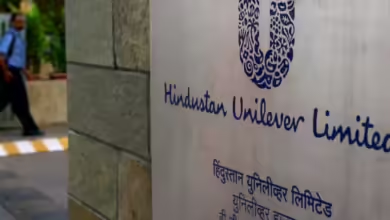Viewpoint | Viksit Bharat: Mapping India’s Path to Superior Logistics
With more than 1.4 billion citizens from many different cultures and faiths, the largest democracy in the world has made significant socioeconomic advancements since its independence in 1947. The wonderful vision of a “Viksit (developed) Bharat” is rapidly approaching as we approach the celebration of our 100th year of independence in 2047. The Indian government is diligently striving to provide avenues for its people to participate in the nation’s economic prosperity.

In addition to economic resilience, which is determined by a high GDP and low national debt, developed countries are known for having high standards of living, which are determined by things like good public transportation, universal healthcare, high-quality education, and strong infrastructure. The central government has made great efforts to revitalize the healthcare and education systems in order to carry out these initiatives, and there has been a significant push in the development of roads and transportation (India has seen nearly a 60% increase in the development of national highways over the past decade). In parallel with the Viksit Bharat program, the nation is about to see a thorough overhaul of the logistics sector, which is known as the foundation of a globalized economy.
India’s economy is expected to reach $26 trillion by 2048. Given that its total logistics costs are estimated to be between 7.8% and 8.9% of GDP (for FY2021-21) and that the nation has an incentive to push merchandise exports to $1 trillion by 2030, the country anticipates significant growth in the logistics and freight sectors over the next twenty years.
ASSISTANCE FROM THE LOGISTICS SECTOR
The Indian freight and logistics industry has grown significantly over the last ten years, and it is expected to reach $484.43 billion by 2029, thanks in large part to the widespread use of new technologies. With a market value of $317.26 billion, the industry is vital to the Indian economy, employing over 20 million people and making up 14.4% of the country’s GDP. India is now ranked 38th out of 139 countries on the World Bank’s Logistics Performance Index, an improvement of six places from before. This suggests that the country has been making consistent efforts through national initiatives like the PM Gati Shakti National Master Plan for infrastructure development, the National Logistics Policy, and technological and infrastructure advancements.
As the country moves forward with implementing its Viksit Bharat concept, national government initiatives have significantly accelerated India’s attempts to become a robust logistics center.
GOVT-CENTRIC ACTIONS TO STRENGTHEN LOGISTICS
With a 73 percent market share, highways dominate; rail, water, and air follow at 18%, 5%, and 5%, respectively. The Central government has launched many attempts to solve these issues, with the goal of creating a robust logistics market that would support the dependent manufacturing industry.
The Central government introduced the PM Gati Shakti National Master Plan (NMP) in 2021 in recognition of the crucial role that logistics infrastructure plays in economic development. The NMP focuses on improving multimodal connectivity infrastructure across different economic zones within the nation’s primary transportation sectors. In addition, the NMP acts as a digital platform, connecting current infrastructure programs, including UDAN (regional air connectivity), Sagarmala (ports and waterways), and Bharatmala (roadways). According to the World Bank’s Logistics Performance Index Report 2023, India’s port turnaround time of 0.9 days is excellent and beats that of established countries like the USA, Australia, and Singapore. These results demonstrate the positive impact of this strategic emphasis.
The administration is moving forward with a multifaceted plan to alleviate bottlenecks in logistics and improve efficiency. Under the Bharatmala Pariyojana scheme, a significant endeavor is creating a nationwide network of 35 multimodal logistics parks, requiring an expenditure of about Rs 46,000 crore. In order to further streamline logistics operations and support a more competitive Indian economy, these parks will act as regional hubs for aggregating and distributing cargo across diverse industrial and agricultural centers, consumer marketplaces, and export-import gateways like seaports.
With its strategic location along a 5,812 km international border with China, Bhutan, Myanmar, Bangladesh, and Nepal, India’s Northeastern Region (NER) offers a single entry point for commerce and the development of relationships with East and Southeast Asia. The PM Development Initiative for North Eastern Region (PM-DevINE), which focuses on the region’s infrastructural requirements and is wholly sponsored by the Center, was started in 2022 to solve the issues of connectivity and logistics infrastructure in the area.
Furthermore, granting full permission for 100 percent FDI and classifying the logistics industry as infrastructure opens up a plethora of tax breaks that support long-term development prospects.
THE WAY AHEAD
There is still work to be done, even with the tremendous efforts being made to improve the nation’s logistical environment.
The Ministry of Commerce and Industry publishes the annual Logistics Ease Across Different States (LEADS) Report, which extensively captures the key insights of the industry through an intensive survey conducted across various stakeholders across the value chain. However, in order to consistently modify/develop policies that are supported by evidence, a more hybrid approach utilizing primary and secondary survey data is needed to identify cost-wasting areas (like transportation, the nature of products moved, and warehouse operations).
We see emerging trends globally in the next ten years that shift towards the integration of advanced technologies (like drone delivery systems), which further necessitates a concurrent focus on preparedness for these emerging logistical trends. These trends coincide with our ongoing efforts to prioritize the development of a multimodal logistics network and advance our entire logistics sector. Moreover, it is increasingly important to include rural ecology in the national logistics system in order to guarantee the creation of a strong, comprehensive system that serves everyone.
Given that rivers continue to be among the most productive and economical ways to move cargo, it is necessary to look into ways to create a strong ecosystem of inland waterways in addition to the nation’s 20,236 km of navigable coastline (according to the Inland Waterways Authority of India). With China’s significant cargo-handling performance over the past 40 years—its total cargo volume growing from 358 million tons in 1978 to 3.74 billion in 2018 (considerably higher than that of the US or the European Union)—leveraging its strategic inland waterway transport (ITW) could be a step in the right direction.
In the end, the value chain’s supply chain must guarantee that things move freely along it. In terms of our economy, we should emphasize the need to removing all barriers to the flow of knowledge and materials. Only then will there be Shakti, Gati, and Viksit. The vision of a “Viksit Bharat” is not just an ideology to amplify our efforts in boosting our economic and infrastructural capacities but also empowering our citizens socio-economically, ensuring that every citizen of the country is contributing to the execution of Viksit Bharat. This is important to note as the country’s logistic sector continues to prosper and develop.







